
The hazy, hot, and humid days of summer have arrived for much of the country. The extreme heat and high humidity not only affect our comfort, but they are also a threat to our health—leading to heat stroke, heat exhaustion and death. In fact, the CDC reported over 7,800 heat-related deaths in the U.S. between 1999 and 2009. As heat-trapping greenhouse gases increase in the atmosphere from burning fossil fuels, extreme heat, and thus heat stress, will become more common.
Since the Heat Index is not defined for temperatures below 80°F and relative humidity below 40%, this week’s analysis displays changes in Heat Stress Index. The Heat Stress Index is similar to the Heat Index, but the Heat Stress Index uses an apparent temperature calculation (temperature and vapor pressure). This week's graphic specifically looks at how the summer average maximum apparent temperatures have changed in your market. In most U.S. cities, the average apparent temperature, or how it feels during the summers, has increased. Furthermore, according to the National Centers for Environmental Information, the number of days with dangerous apparent temperatures, those exceeding the location's top 15%, is also increasing in many cities. That top 15% threshold is positively correlated with extreme weather mortality statistics, suggesting that U.S. cities are reaching dangerous temperature levels more often.
If emissions trends continue unabated, the IPCC projects up to a 4.8°F increase average global temperature by the end of the 21st century. Furthermore, researchers predict that extremely high temperatures now observed once in 20 years may occur every 2 to 4 years. Similarly, global humidity is expected to increase alongside temperatures. For each degree increase in temperature, we can expect the atmosphere to hold 4% more water vapor, contributing to the rising apparent temperatures and overall heat stress.

